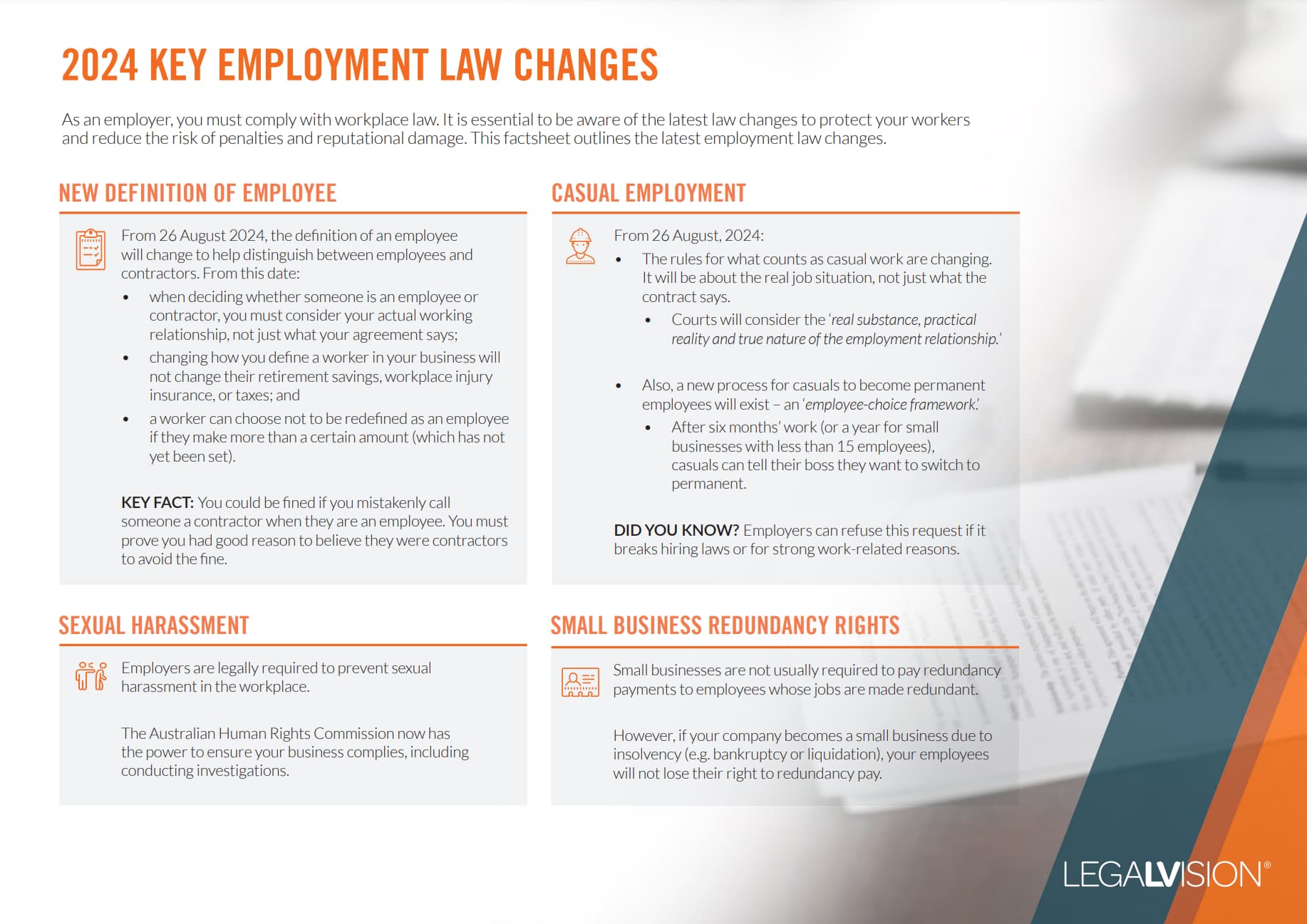In Short
- Employers must ensure the health and safety of workers at a client’s home, just as in a regular workplace.
- Conducting a risk assessment at the client’s home is essential to identify potential hazards.
- Clear communication and proper documentation are vital for meeting WHS obligations.
Tips for Businesses
To comply with WHS obligations when employees work at a client’s home, conduct thorough risk assessments and maintain open communication with both the worker and the client. Document all safety measures and provide necessary training to help workers manage potential risks in various home environments.
In Australia, work health and safety (WHS) laws apply not only to traditional office settings but also to scenarios where services are provided in clients’ homes. Whether you run a cleaning service, home repairs business, or healthcare service, you must adhere to specific WHS obligations to ensure the safety and well-being of your employees, clients and any other individuals who may be affected by your work activities. This article will delve into the essential aspects of your WHS obligations when operating in a client’s home.
What are WHS Obligations?
Firstly, it is crucial to understand that WHS in Australia is governed by both federal, state and territory laws. The primary legislation at the federal level is the Work Health and Safety Act 2011 (WHS Act), which sets out the overarching framework for WHS across all industries. This framework has generally been implemented throughout Australia, with the exception of Victoria. Notably, each state and territory also has its own regulations and additional requirements, meaning you, as an employer, must comply with the laws relevant to the jurisdiction in which you operate.
Duty of Care to Clients
In addition to your duty of care towards your employees, you also have a responsibility to ensure the health and safety of your clients. This includes informing clients of any potential risks associated with the services being provided and taking appropriate measures to minimise these risks. For example, you may need to provide clear instructions to clients on how to prepare their homes for the arrival of service providers or advise them on any safety precautions they need to take.
Continue reading this article below the formCarrying out Risk Assessments and Training
Risk assessment is a fundamental aspect of WHS compliance. Before commencing work in a client’s home, you must conduct a thorough risk assessment to identify any hazards that may pose a threat to health and safety. This includes hazards such as:
- slippery floors;
- electrical hazards;
- trip hazards; and
- hazardous substances.
Once identified, you must implement control measures to eliminate or minimise these risks to an acceptable level.
When providing services in a client’s home, you must also consider the unique risks associated with working in unfamiliar environments. Factors such as limited space, uneven surfaces, and the presence of pets or children can all increase the likelihood of accidents or injuries. Therefore, it is essential for you to adapt your work practices and procedures accordingly to mitigate these risks.
Carrying Out Training
Another key aspect of WHS compliance is ensuring that your employees are adequately trained and competent to perform their work safely. This includes training on safe work practices, the use of personal protective equipment (PPE), and emergency procedures. You must also provide supervision and guidance to ensure that your employees understand their responsibilities and can effectively identify and respond to hazards in the client’s home.
Furthermore, you have an obligation to consult with your employees and involve them in WHS decision-making processes. This includes:
- seeking their input on risk assessments;
- consulting with them on proposed changes to work practices or procedures; and
- encouraging them to report any health and safety concerns or incidents that occur while providing services in a client’s home.
Record Keeping
Maintaining accurate records is another important aspect of WHS compliance. You must keep records of:
- risk assessments;
- training sessions;
- incident reports; and
- any other relevant WHS documentation.
These records not only demonstrate compliance with WHS laws but also provide valuable information for identifying trends, assessing the effectiveness of control measures, and implementing continuous improvement initiatives.
Finally, you must be prepared to respond effectively to any health and safety incidents that occur while providing services in a client’s home. This includes having procedures in place for reporting incidents, providing first aid, and investigating the root causes to prevent similar incidents from occurring in the future.

As an employer, it is essential to understand what employment laws have changed and their implications for your business — particularly the changes to the Fair Work Act 2009 through the new Closing the Loopholes legislation.
Key Takeaways
In conclusion, you, as an employer providing services in a client’s home in Australia, have a range of WHS obligations that you must fulfil to ensure the health and safety of your employees, clients, and others affected by your work activities. You may demonstrate WHS compliance and create safer working environments by:
- conducting thorough risk assessments;
- providing adequate training and supervision;
- consulting with employees; and
- maintaining accurate records.
If you have questions about your WHS duties, our experienced employment lawyers can assist as part of our LegalVision membership. For a low monthly fee, you will have unlimited access to lawyers to answer your questions and draft and review your documents. Call us today on 1300 544 755 or visit our membership page.
Frequently Asked Questions
You should ensure that you have comprehensive public liability insurance and that it covers in-home services. Additionally, have clear terms and conditions in your service agreements that outline the responsibilities and liabilities of both parties. Implement a robust risk management plan that includes thorough risk assessments, employee training, and maintaining detailed records of all WHS-related activities.
Some key elements include conducting regular risk assessments, training employees in WHS procedures, implementing open lines of communication and maintaining records of incident reports and response procedures.
We appreciate your feedback – your submission has been successfully received.











